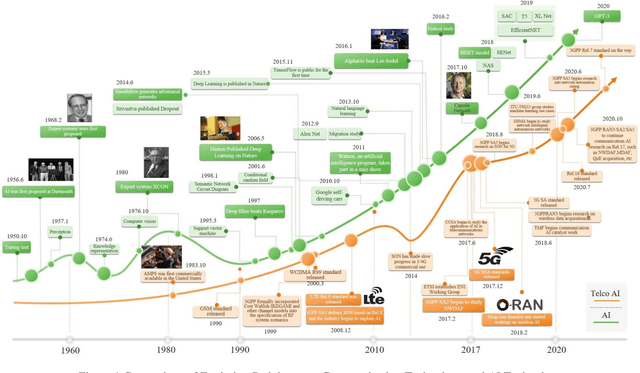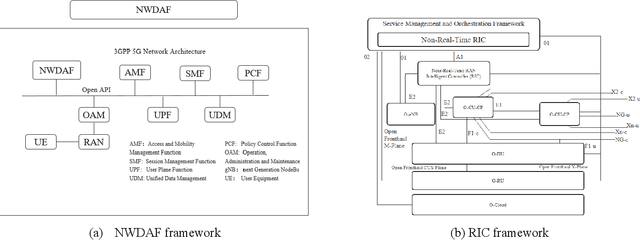Ye Ouyang
AsiaInfo Technologies
AIGC Empowering Telecom Sector White Paper_chinese
Jul 24, 2023Abstract:In the global craze of GPT, people have deeply realized that AI, as a transformative technology and key force in economic and social development, will bring great leaps and breakthroughs to the global industry and profoundly influence the future world competition pattern. As the builder and operator of information and communication infrastructure, the telecom sector provides infrastructure support for the development of AI, and even takes the lead in the implementation of AI applications. How to enable the application of AIGC (GPT) and implement AIGC in the telecom sector are questions that telecom practitioners must ponder and answer. Through the study of GPT, a typical representative of AIGC, the authors have analyzed how GPT empowers the telecom sector in the form of scenarios, discussed the gap between the current GPT general model and telecom services, proposed for the first time a Telco Augmented Cognition capability system, provided answers to how to construct a telecom service GPT in the telecom sector, and carried out various practices. Our counterparts in the industry are expected to focus on collaborative innovation around telecom and AI, build an open and shared innovation ecosystem, promote the deep integration of AI and telecom sector, and accelerate the construction of next-generation information infrastructure, in an effort to facilitate the digital transformation of the economy and society.
6G Network Business Support System
Jul 19, 2023Abstract:6G is the next-generation intelligent and integrated digital information infrastructure, characterized by ubiquitous interconnection, native intelligence, multi-dimensional perception, global coverage, green and low-carbon, native network security, etc. 6G will realize the transition from serving people and people-things communication to supporting the efficient connection of intelligent agents, and comprehensively leading the digital, intelligent and green transformation of the economy and the society. As the core support system for mobile communication network, 6 6G BSS need to integrate with new business models brought about by the development of the next-generation Internet and IT, upgrade from "network-centric" to "business and service centric" and "customer-centric". 6G OSS and BSS systems need to strengthen their integration to improve the operational efficiency and benefits of customers by connecting the digital intelligence support capabilities on both sides of supply and demand. This paper provides a detailed introduction to the overall vision, potential key technologies, and functional architecture of 6G BSS systems. It also presents an evolutionary roadmap and technological prospects for the BSS systems from 5G to 6G.
AdaptiveNet: Post-deployment Neural Architecture Adaptation for Diverse Edge Environments
Mar 13, 2023Abstract:Deep learning models are increasingly deployed to edge devices for real-time applications. To ensure stable service quality across diverse edge environments, it is highly desirable to generate tailored model architectures for different conditions. However, conventional pre-deployment model generation approaches are not satisfactory due to the difficulty of handling the diversity of edge environments and the demand for edge information. In this paper, we propose to adapt the model architecture after deployment in the target environment, where the model quality can be precisely measured and private edge data can be retained. To achieve efficient and effective edge model generation, we introduce a pretraining-assisted on-cloud model elastification method and an edge-friendly on-device architecture search method. Model elastification generates a high-quality search space of model architectures with the guidance of a developer-specified oracle model. Each subnet in the space is a valid model with different environment affinity, and each device efficiently finds and maintains the most suitable subnet based on a series of edge-tailored optimizations. Extensive experiments on various edge devices demonstrate that our approach is able to achieve significantly better accuracy-latency tradeoffs (e.g. 46.74\% higher on average accuracy with a 60\% latency budget) than strong baselines with minimal overhead (13 GPU hours in the cloud and 2 minutes on the edge server).
Vertical Federated Learning
Nov 24, 2022



Abstract:Vertical Federated Learning (VFL) is a federated learning setting where multiple parties with different features about the same set of users jointly train machine learning models without exposing their raw data or model parameters. Motivated by the rapid growth in VFL research and real-world applications, we provide a comprehensive review of the concept and algorithms of VFL, as well as current advances and challenges in various aspects, including effectiveness, efficiency, and privacy. We provide an exhaustive categorization for VFL settings and privacy-preserving protocols and comprehensively analyze the privacy attacks and defense strategies for each protocol. In the end, we propose a unified framework, termed VFLow, which considers the VFL problem under communication, computation, privacy, and effectiveness constraints. Finally, we review the most recent advances in industrial applications, highlighting open challenges and future directions for VFL.
Reinforcement Learning in Computing and Network Convergence Orchestration
Sep 22, 2022



Abstract:As computing power is becoming the core productivity of the digital economy era, the concept of Computing and Network Convergence (CNC), under which network and computing resources can be dynamically scheduled and allocated according to users' needs, has been proposed and attracted wide attention. Based on the tasks' properties, the network orchestration plane needs to flexibly deploy tasks to appropriate computing nodes and arrange paths to the computing nodes. This is a orchestration problem that involves resource scheduling and path arrangement. Since CNC is relatively new, in this paper, we review some researches and applications on CNC. Then, we design a CNC orchestration method using reinforcement learning (RL), which is the first attempt, that can flexibly allocate and schedule computing resources and network resources. Which aims at high profit and low latency. Meanwhile, we use multi-factors to determine the optimization objective so that the orchestration strategy is optimized in terms of total performance from different aspects, such as cost, profit, latency and system overload in our experiment. The experiments shows that the proposed RL-based method can achieve higher profit and lower latency than the greedy method, random selection and balanced-resource method. We demonstrate RL is suitable for CNC orchestration. This paper enlightens the RL application on CNC orchestration.
The Next Decade of Telecommunications Artificial Intelligence
Feb 22, 2021



Abstract:It has been an exciting journey since the mobile communications and artificial intelligence were conceived 37 years and 64 years ago. While both fields evolved independently and profoundly changed communications and computing industries, the rapid convergence of 5G and deep learning is beginning to significantly transform the core communication infrastructure, network management and vertical applications. The paper first outlines the individual roadmaps of mobile communications and artificial intelligence in the early stage, with a concentration to review the era from 3G to 5G when AI and mobile communications started to converge. With regard to telecommunications artificial intelligence, the paper further introduces in detail the progress of artificial intelligence in the ecosystem of mobile communications. The paper then summarizes the classifications of AI in telecom ecosystems along with its evolution paths specified by various international telecommunications standardization bodies. Towards the next decade, the paper forecasts the prospective roadmap of telecommunications artificial intelligence. In line with 3GPP and ITU-R timeline of 5G & 6G, the paper further explores the network intelligence following 3GPP and ORAN routes respectively, experience and intention driven network management and operation, network AI signalling system, intelligent middle-office based BSS, intelligent customer experience management and policy control driven by BSS and OSS convergence, evolution from SLA to ELA, and intelligent private network for verticals. The paper is concluded with the vision that AI will reshape the future B5G or 6G landscape and we need pivot our R&D, standardizations, and ecosystem to fully take the unprecedented opportunities.
 Add to Chrome
Add to Chrome Add to Firefox
Add to Firefox Add to Edge
Add to Edge